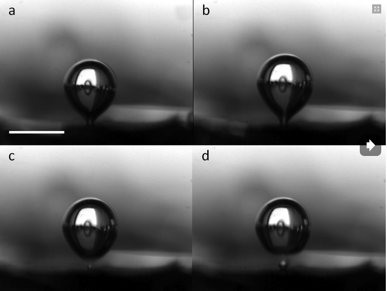Earlier this week the government reassured the energy sector that the price of offshore wind could be reduced from an average of £140/MWh down to a mouth-watering £100/MWh before the end of the decade. While the story made the headlines, there wasn’t much talk of the new technologies that will have to be developed in order to meet this target.
Phil De Villiers, the Carbon Trust’s head of offshore wind, was giving an overview to a small group of journalists on the technologies that he and his team on the Offshore Wind Accelerator Programme (OWA) believe will be key.
In order to achieve the government’s target of generating 18GW of offshore wind electricity by 2020, there is a need to develop offshore wind farms in ‘Round 3’ sites that are further offshore where stronger winds and larger waves exist. Even then, many sceptics argue that this figure is unattainable.
The OWA programme was partly set up because the Carbon Trust claim that current technologies on the market are not suited to the conditions found at Round 3 sites. Through the OWA programme, the Carbon Trust is dedicating £45m to develop a range of new technologies that could help deliver a 25 per cent reduction in the price of offshore wind energy.
Generally speaking these technologies can be broken down into four groups, including: access systems, electrical systems, foundations and wake effects.
Access systems relate to the vessels and transport systems used to take crew out to the turbine for operations and maintenance - essential to keep the turbines spinning and generating electricity.
De Villiers explained operations and maintenace costs account for 25-30 per cent of the total cost of offshore wind energy. ‘Anything you can do to drive that down is very useful,’ he said. ‘A large component of that [percentage] is unavailability of the wind farm so if it’s sitting idol because there is a technical problem and it’s not generating electricity then you’re not getting the revenues.’
Today, the best vessels today can only operate in 1.5m of significant wave, which means there are approximately 200 days per year when technicians can reach the turbine.
‘If you can increase it to 3.0m then you get something more like 310 days a year which means its much more credible for operations and maintenance at Round 3 sites,’ said De Villiers.
Over the last year the OWA programme has been providing financial and technical support to 13 access system concepts, which include six new vessels, new bridges, robotic arms and pivoting decks.
The vessels have been designed with unique stabilizing technology so that there is limited movement when transferring crew onto a turbine and transferring the crew to and from the windfarm’s mothership, which is where the crew would sleep.
Vessels being developed include the Nauti-craft, which has a suspension attached to each hull, and the Umo Mandal high-speed Surface Effects Vessel (also used by the military), which is capable of 30 knots and will be used in situations where there is a tight weather window.

With regards to electrical systems, there is a need to introduce higher voltage arrays, which have improved reliability, lower losses, and require less cable. Current cables are 33kV but OWA are hoping they can help someone develop a 66kV cable.
The foundations of offshore wind turbines in relatively shallow waters have traditionally been supported by monopile structures. However, there is a need to develop more capable foundations as turbines are moved into deeper waters with larger waves, as monopiles don’t fare very well beyond 30m. OWA is supporting four new foundation concepts including Keystone, which comprises of a guide structure with three supports, and the Clifford BMT Freyssinet, which is a novel float out and sink concept.

Finally, the research on wake effects is all about optimising the layout of wind farms based on where the wind blows most efficiently. ‘One of the findings is that if you have more turbines around the perimeter of a windfarm you get a higher yield,’ said De Villiers.
In order to meet the target figure of 18GW by 2020 then it is crucial that the technologies continue to receive backing from the likes of the OWA programme. However, such technologies eventually need to be demonstrated if they are to have any hope of making it to market but The Engineer reported earlier this week that this isn’t currently the case.


Collaboration to address viable solutions for VAWG database
Interesting to see what the funders say too..."The Innovation Launchpad Network+, .... brings together leading universities, the Catapult Network and...